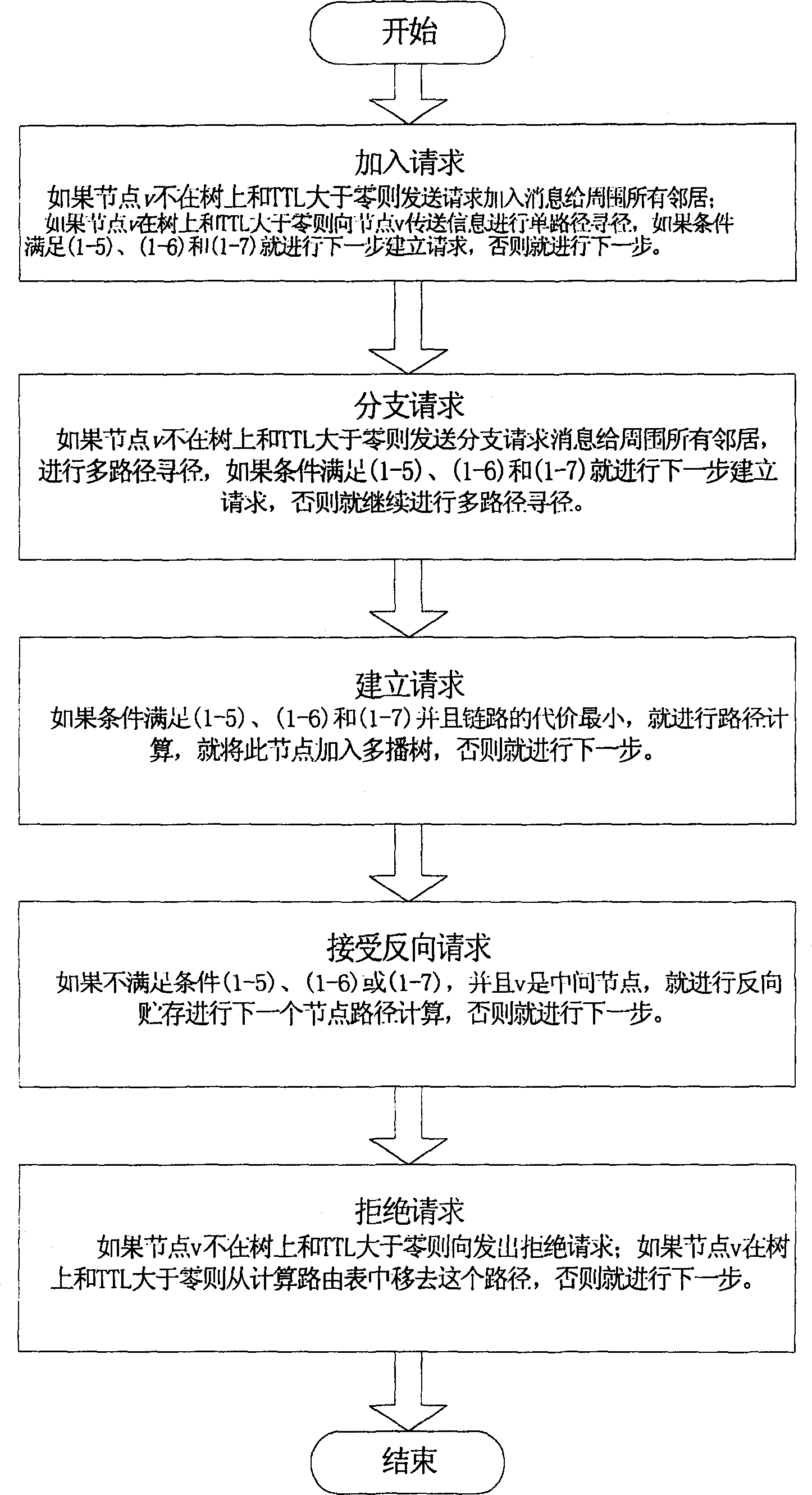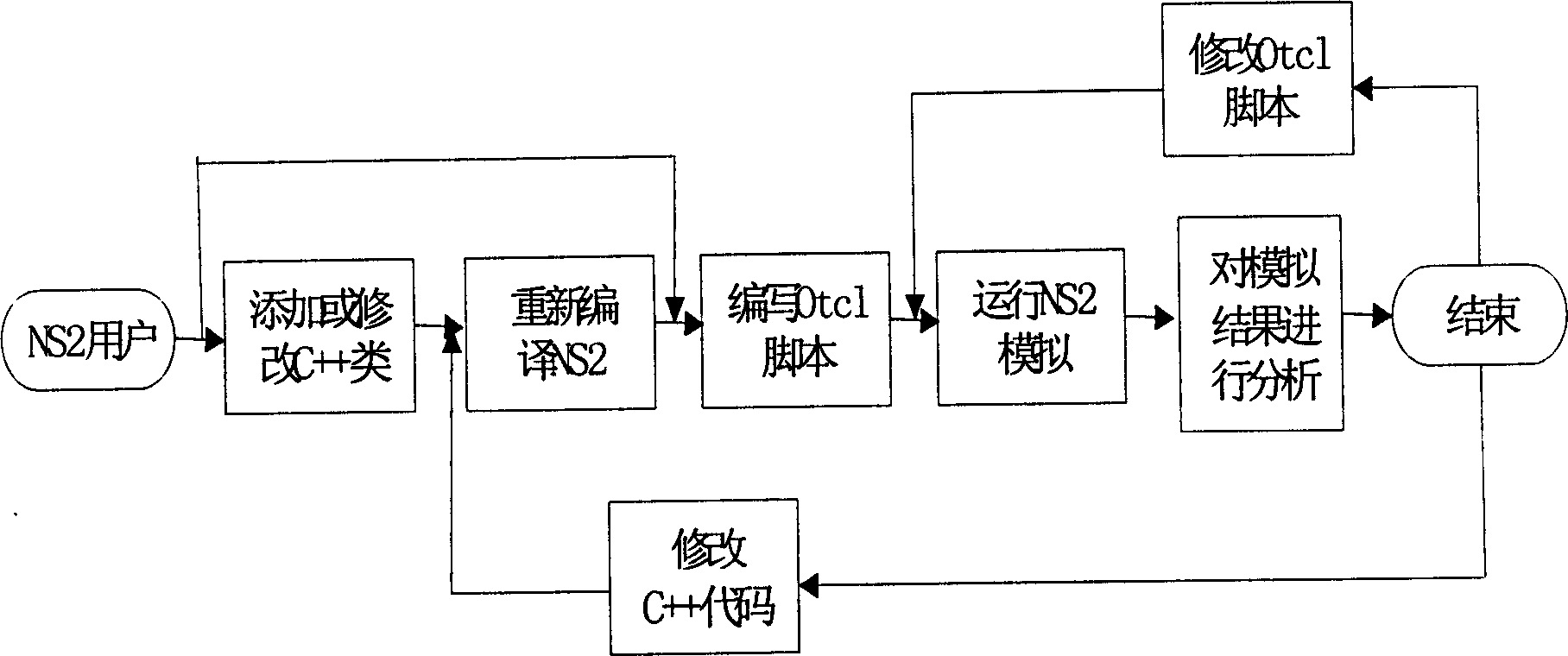Multi-broadcast routing method of supporting multi-QoS constraint
A routing and routing protocol technology, applied in the field of multicast routing that supports multiple QoS constraints, can solve problems such as reduced success rate, reduce generation cost, reduce connection establishment time and signaling control overhead, and reduce connection establishment time. Effect
- Summary
- Abstract
- Description
- Claims
- Application Information
AI Technical Summary
Problems solved by technology
Method used
Image
Examples
Embodiment Construction
[0024] 1. Theoretical basis: The present invention first proposes a network model of a multicast routing protocol (MRPMQoS) that supports multiple QoS constraints under the network simulator NS2.
[0025] As far as multicast routing is concerned, a network can be represented as a weighted graph G=(V, E) where V represents the set of nodes and E represents the set of communication links connecting the nodes. Without loss of generality, there is at most one link between a pair of nodes in this type of network, and the parameters beside the link can be used to describe the current state of the link. Let p(v 0 ,, v 1 ,,...,v k ) represents a path in graph G, where v 0 , representing the source node, v k Represents an end node, E(P) represents the set of edges on the path P, for e∈E(P), there is a path P with:
[0026] Bandwidth (the minimum broadband value of each link): bandwidth(P)=min{b(e)}(1-1)
[0027] Delay: refers to the sum of the delays of each link, which can be ex...
PUM
 Login to View More
Login to View More Abstract
Description
Claims
Application Information
 Login to View More
Login to View More - R&D
- Intellectual Property
- Life Sciences
- Materials
- Tech Scout
- Unparalleled Data Quality
- Higher Quality Content
- 60% Fewer Hallucinations
Browse by: Latest US Patents, China's latest patents, Technical Efficacy Thesaurus, Application Domain, Technology Topic, Popular Technical Reports.
© 2025 PatSnap. All rights reserved.Legal|Privacy policy|Modern Slavery Act Transparency Statement|Sitemap|About US| Contact US: help@patsnap.com



